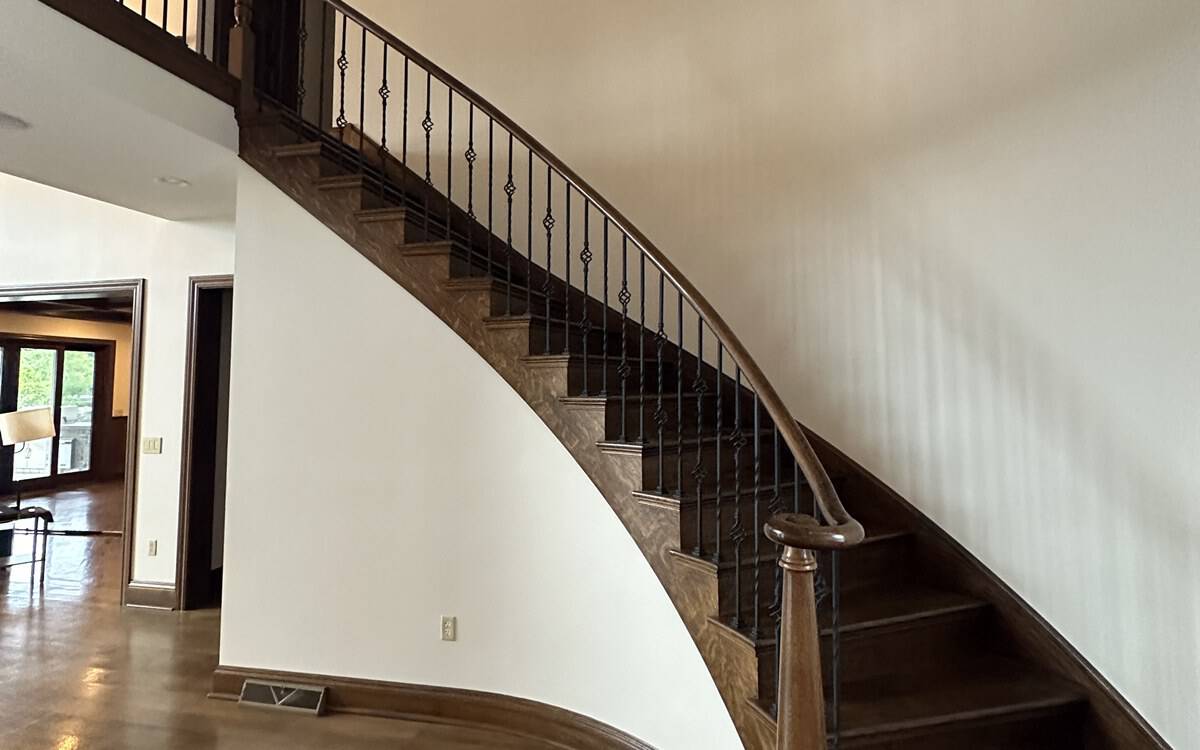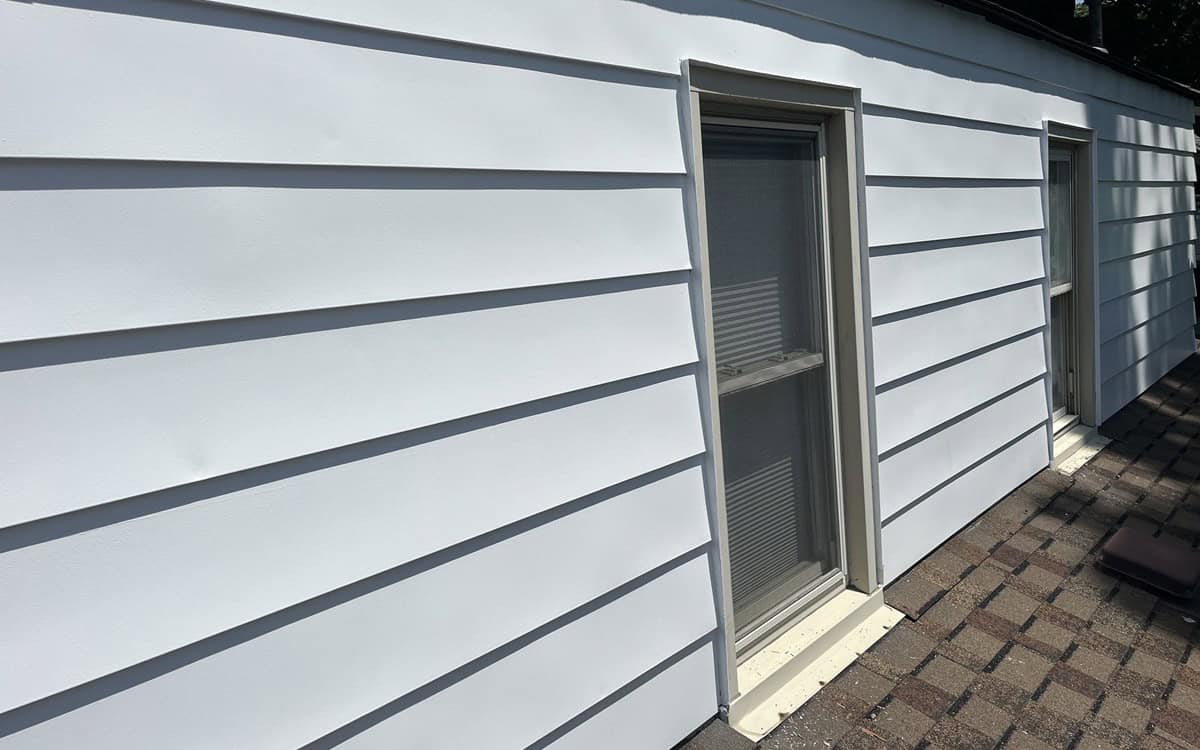When it comes to interior paint vs exterior paint, understanding the difference can save you time, money, and frustration. Paint can breathe new life into any home project—from cozy bedrooms to bold front doors—but here’s the catch: paint isn’t one-size-fits-all. The question many homeowners ask is, “Can I use the same paint inside and outside?”
In this blog, we’re breaking it down so you know exactly which type of paint to use, where, and why. That way, your walls and surfaces look better and last longer.
Key Takeaways:
- Interior paint is designed for beauty and easy cleaning.
- Exterior paint is built to handle weather, sun, and temperature swings.
- Using the wrong paint in the wrong place can lead to peeling, fading, or even structural damage.
- Knowing the differences can help you make better choices and save money over time.

The Purpose Behind the Paint
Interior Paint: Beauty Meets Function
Interior paint is made for indoor spaces like bedrooms, kitchens, and living rooms. It’s all about appearance and being easy to clean. Think smooth finishes, vibrant colors, and low odors.
Key features:
- Low or zero VOCs (Volatile Organic Compounds): These are chemicals that evaporate into the air as paint dries. Interior paints are formulated with low or no VOCs to keep indoor air healthier and reduce that “new paint” smell.
- Resistant to scrubbing, stains, and scuffs: Ideal for high-traffic areas like hallways and kids’ rooms, interior paint is engineered to stand up to cleaning without fading or wearing down.
- Smooth, stylish finishes (eggshell, satin, matte): Interior paint offers a range of elegant finishes that not only enhance aesthetics but also hide imperfections and provide a refined touch to any room.
Exterior Paint: Protection Comes First
Exterior paint, on the other hand, has a much tougher job. It has to stand up to rain, snow, wind, UV rays, and even mold. That’s why it contains extra additives to make it more durable.
Key features:
- Weather-resistant and UV-protective: Exterior paint is designed to resist fading and deterioration caused by sunlight, rain, and snow—keeping your home looking fresh season after season.
- Fights mildew and moisture damage: Special additives help prevent mold and mildew from growing on your home’s exterior surfaces, especially in damp or shaded areas.
- Flexible to expand and contract with temperature changes: Outdoor conditions can be extreme. Exterior paint remains flexible, so it doesn’t crack or peel when the temperature shifts from hot to cold.
What Happens If You Mix Them Up?
It might be tempting to use leftover interior paint on an outdoor project. Or maybe you love the durability of exterior paint and want it inside. But here’s the problem:
Interior Paint Outside:
- Will fade fast under the sun: Interior paint isn’t formulated to resist ultraviolet (UV) rays, so it quickly loses color vibrancy and can appear washed out when exposed to direct sunlight.
- Can crack, peel, or bubble due to moisture: Without weatherproofing elements, interior paint can’t handle rain or humidity. Over time, it starts to deteriorate, leading to surface damage.
- Isn’t built to handle temperature changes: Fluctuating temperatures cause exterior surfaces to expand and contract. Interior paint lacks the flexibility to move with these changes, leading to cracking and flaking.
Exterior Paint Inside:
- Strong odors that linger: Exterior paint often contains more potent chemicals, which means stronger and longer-lasting smells that can be uncomfortable indoors.
- Higher VOCs, which can affect indoor air quality: These chemicals are released into the air as the paint dries and can contribute to respiratory issues or headaches in enclosed spaces.
- May not dry with the finish or texture you want indoors: Exterior paint is designed for durability, not finesse. It can feel rough or sticky and may not offer the polished look most people want for indoor walls.
Bottom line? Use the right paint for the right job.

Ingredients Make the Difference
Paint is made of four main components: pigments, binders, solvents, and additives. Here’s how they differ between interior and exterior formulas:
Interior Paint:
- More emphasis on pigment for rich color
- Binders made for smooth application and stain resistance
- Fewer harsh additives to keep air quality safe
Exterior Paint:
- Stronger binders for adhesion and flexibility
- Additives like fungicides and UV blockers
- Solvents that help paint cure in extreme conditions
How to Choose the Right Paint for Your Project
When starting a paint project, ask yourself two questions:
- Is this space indoors or outdoors?
- Will it be exposed to moisture, sun, or temperature swings?
If it’s a garage, a basement wall, or a sunroom, you might need something in between. Some brands offer hybrid or specialty paints for these areas.
Also, always check the paint label for its intended use. Many cans say “interior,” “exterior,” or even “interior/exterior.” Don’t just go by color or finish—look at what the paint is designed to handle.
Need Something In Between? Hybrid Paints to the Rescue
Not every space fits neatly into the “interior” or “exterior” box. Think garages, basement walls, sunrooms, or covered porches—these areas often deal with moisture, temperature shifts, or extra wear and tear. In those cases, you might want to consider hybrid paints—a smart solution that combines the best of both worlds.
Hybrid paints are engineered to deliver the toughness of oil-based formulas with the ease and low odor of water-based options. They’re durable, versatile, and often suitable for both indoor and outdoor use. Here are a few trusted brands offering standout hybrid options:
- Sherwin-Williams Emerald® Urethane Trim Enamel: This urethane-modified acrylic paint is ultra-durable, has low VOCs, and is perfect for trim, doors, and cabinets—whether inside or out. It holds up well in high-touch, high-traffic zones.
- Benjamin Moore Advance®: A waterborne alkyd paint that delivers a beautifully smooth finish with the strength to match. It’s ideal for interior trim and cabinetry but can also handle protected exterior surfaces.
- Behr Urethane Alkyd Semi-Gloss Enamel: This hybrid enamel offers a tough, furniture-like finish with easy soap-and-water cleanup. Use it on doors, trim, and cabinets across your home—inside or out.
- Cloverdale Renaissance® Hybrid Waterborne Alkyd Enamel: Designed for flexibility, this hybrid enamel works on both interior and exterior surfaces, bringing traditional alkyd durability into a modern, eco-friendlier formula.
These paints shine in those tricky transitional areas, offering long-lasting protection with professional-looking results. If you’re working on a space that doesn’t fit the mold, a hybrid paint might just be your best bet.
Final Thoughts: Use the Right Paint, Get Better Results
It may seem like a small detail, but choosing between interior paint vs exterior paint can make or break your project. Using the right type means your paint job lasts longer, looks better, and protects your surfaces properly.
Need help picking the right paint or planning your next project? Don’t leave your home improvement project to guesswork—let the experts at Apex Coating Company, LLC. guide you to the perfect paint solution. Whether you’re refreshing a room or tackling a full exterior makeover, our friendly team offers personalized advice, expert color consultations, and top product recommendations. Call us today at 724-903-5904 to get started and see the difference the right paint—and the right team—can make.





